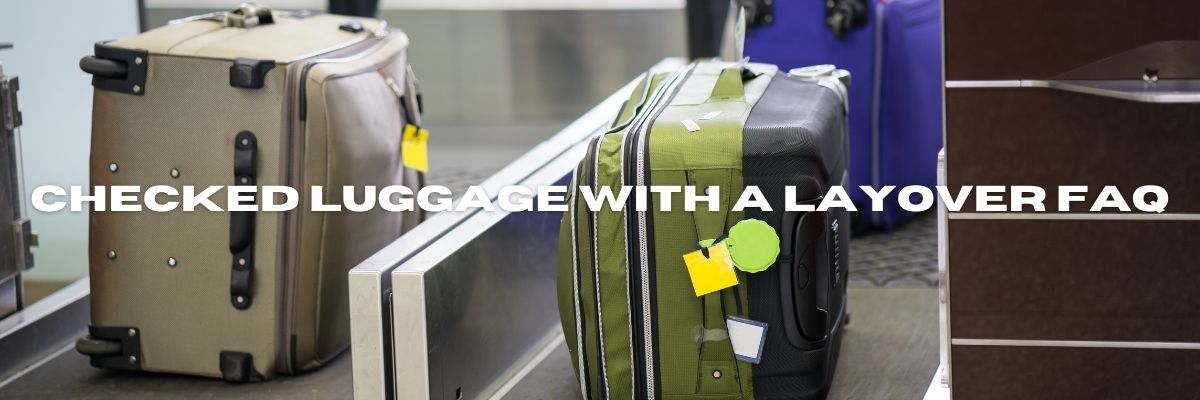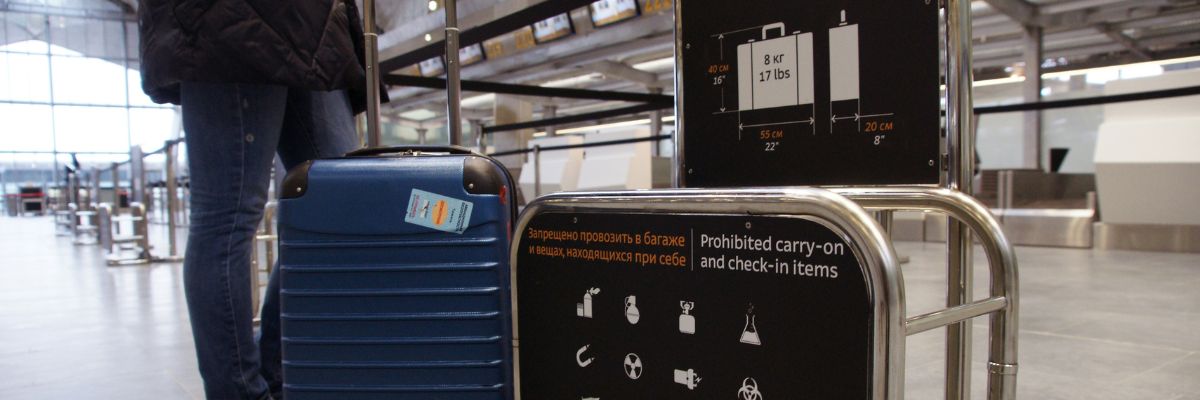Checked Luggage with a Layover FAQ

Layovers and checked baggage can be tricky to navigate. Will my luggage be automatically transferred? Do I need to re-check my bags? Fortunately, understanding airline policies and procedures can remove these worries so you can sit back and enjoy your layover in peace.
What Happens to My Checked Luggage During a Layover?
Automatic Transfer
For the most part, checked luggage is typically transferred to your connecting flight automatically during layovers, providing a seamless experience. However, there are exceptions.
Here are some cases where you may need to recheck baggage:
• Different airlines with no partnership agreements.
• Separate tickets.
• Immigration/customs checks.
• Multiple or long layovers.
Exceptions
For separate tickets, airlines treat this as two separate transactions and are not obliged to automatically transfer your luggage. Also, a long layover or many connections may require you to recheck your baggage. Finally, some countries have strict immigration and customs policies which may result in claiming and rechecking yourself.
Do I Need to Recheck My Luggage During a Layover?
Domestic vs. International Layovers
Automatic transfers are typically the norm for domestic flights. Whereas, rechecking luggage on international flights is far more common, namely due to customs and immigration checks. In the U.S. passengers are required to claim and recheck their checked bags upon arrival from another country before boarding their connecting domestic flight.
Airline Policies
Different airlines have different policies for everything and checked baggage is no exception. It’s important to verify the specific policies of each airline that you will be using to avoid arriving at your destination without your luggage.
How Can I Ensure My Luggage Makes It to My Final Destination?
Labeling and Tags
It may sound primitive but properly labeling your luggage with personal information tags is the best way to avoid losing it. Firmly attach a high-quality tag and include details such as your contact info, flight number, and destination.
Checking the Airline’s Tagging
In addition to labeling your own bag, it’s crucial to inspect the airline tag to ensure the details are correct. If the airline tag info is incorrect, speak to the airline staff immediately and get a new, accurate one.
What If I Have a Long Layover?
Storing Luggage
For long layovers, you don’t want to be lugging your bags around. Fortunately, airports provide facilities to safely store your luggage. For instance, secure lockers and left luggage services are great options.
Claiming and Rechecking Luggage
If claiming and rechecking are required, there are procedures in place to make it as seamless as possible. However, be sure to allow enough time to avoid missing your flight.
Here are the steps for claiming and rechecking:
1. Go to the baggage claim area and collect your luggage.
2. Head to the check-in counter.
3. Recheck your luggage and wait to board.
Tips for Managing Checked Luggage During Layovers
Pack Essentials in Carry-On
The key to avoiding mishaps related to delayed or lost checked luggage is to pack essential items in your carry-on. Items such as:
• Valuables and electronics.
• Travel documentation.
• Essential medications.
• Currency.
Keep Track of Baggage Claim Tickets
There are few things worse than losing your luggage. Luckily, keeping your baggage claim ticket and itinerary handy is the perfect antidote for quickly retrieving your luggage should it go missing.
Frequently Asked Questions (FAQ)

Can I add items to my checked luggage during a layover?
If your luggage is automatically transferred, you won’t have the chance to add items. However, if you recheck yourself, you can add items so long as they are legal and don’t exceed weight limitations. That being said, most airlines don’t look kindly on this practice so it’s important to check with airline staff before doing so.
What happens if my checked luggage is lost during a layover?
For flyers, lost luggage is a nightmare scenario. Airlines have set procedures for such occurrences as they do happen from time to time.
Here are the steps to take:
1. Go to the baggage service counter.
2. File a report with all relevant information.
3. Contact the airline and monitor the status of your lost luggage.
4. If not returned, claim compensation.
Airlines have established processes regarding compensation. However, check with the airline to understand their specific policies. Depending on the airline, compensation can extend to delayed or lost luggage.
How long does it usually take for checked luggage to be transferred during a layover?
For domestic flights, the typical time to transfer luggage during a layover is less than an hour. However, for international flights, it can take up to two hours.
Here are some of the main factors that affect baggage transfer speed:
• Size of airport.
• Airline quality.
• Flight delays.
• Duration of layover.
• Customs and immigration checks.
What should I do if I miss my connecting flight?
If you miss your connecting flight, there are some essential steps to take to ensure you get back your checked luggage:
1. Immediately go to the airline’s customer service counter.
2. Check the status of your luggage.
3. Submit a baggage claim if required.
4. Arrange a new flight.
5. Track and follow up on luggage status.
Are there any special considerations for traveling with pets or unusual items?
Airline policies differ when it comes to traveling with pets and other unusual items. It’s important to check with the airline well in advance so you are aware of their specific policies. Often additional fees are charged for such items.
Here’s some tips:
• Fragile items: Pack with protective material and declare them as fragile at check-in.
• Sports equipment: Check for size and weight restrictions, pack in a protective case, and declare at check-in.
• Pets: Check the size, weight, breed, and carrier limitations and confirm what documentation is required. Pack essential items.
Conclusion
To avoid checked luggage-related headaches during layovers, it’s essential to check with both the airlines and airports for specific and up-to-date procedures. Doing so will ensure your baggage arrives safely at the destination with you.



